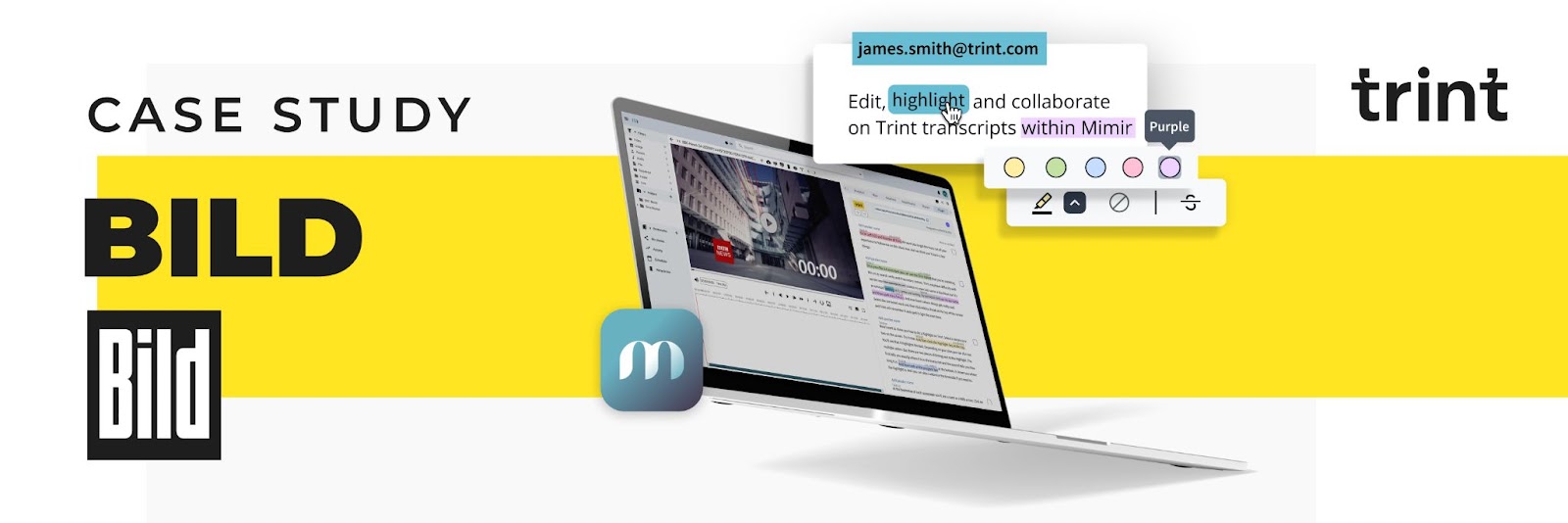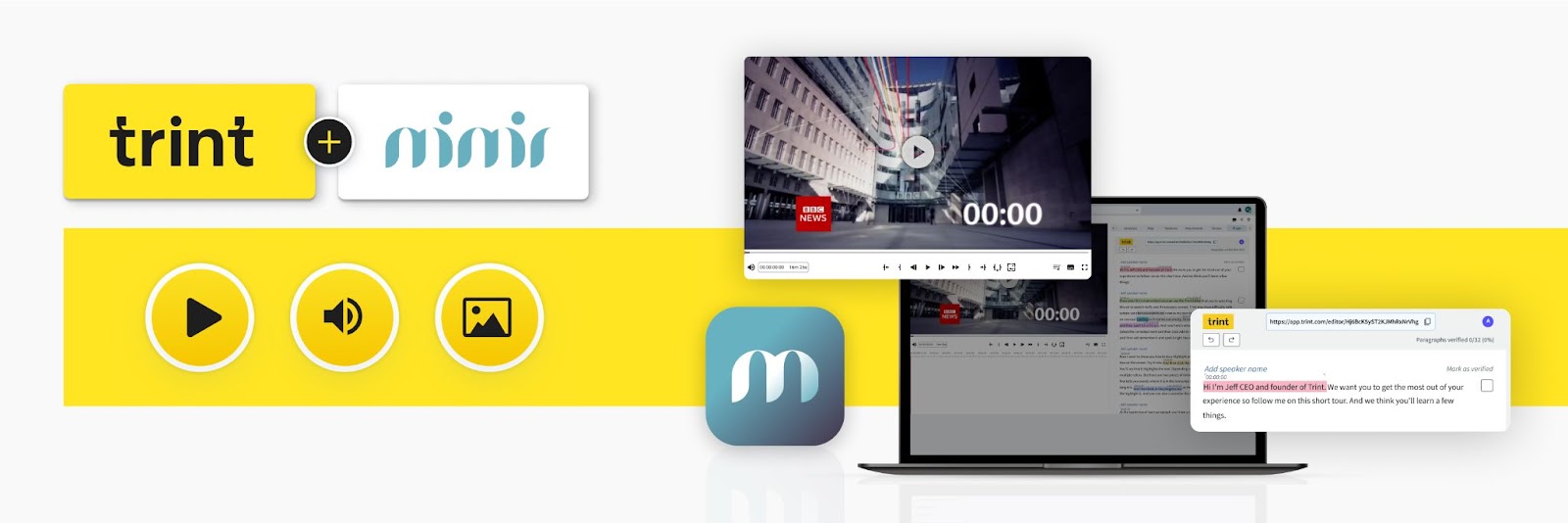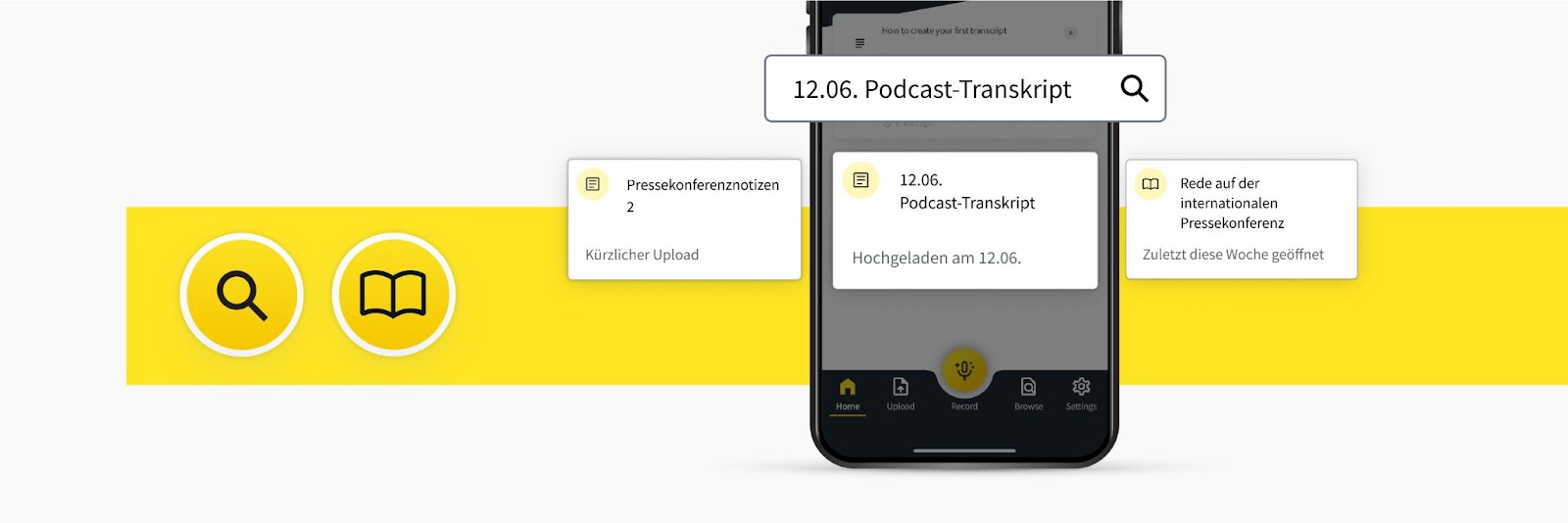
“Trint helps us standardize transcripts across all video content – delivering rich metadata for better archiving and enabling advanced search in Mimir.”
Patrick Markowski, Head of Editorial Tech & Operations at BILD, is talking about the benefits of integrating platforms across the newsroom – such as Trint and its Media Asset Management system, Mimir. As Europe's largest subscribed newspaper, BILD is focused on creating a digital-focused organization to help streamline complex workflows across departments.
“We have adopted an “AI First” mindset – meaning every process is reviewed through the lens of AI to help us automate routine tasks wherever possible,” he says. “Trint’s integration allows us to work seamlessly on transcripts that were previously only linked to the asset. We can easily share interviews with departments that don’t have direct access to our media asset management.”
Founded in 1952 by Axel Springer, BILD has grown from a popular tabloid to a digital powerhouse. “We have around 500 editors, designers, photographers and video specialists that help us reach 48 million people across Germany – surpassing the combined reach of Instagram and TikTok,” says Markowski.
Working in the Axel Springer group for 27 years, Markowski has seen a lot of this digital change first hand and sees how journalism and content creation has become increasingly tech driven. With AI now accelerating that shift, BILD has made an investment in digital tools to help eliminate inefficiencies holding journalists back. An approach that is evident in their new, state-of-the-art newsroom.
"In 2024, we moved into the new Axel Springer building and had the opportunity to build a newsroom from scratch,” he recalls, “featuring a central ring and digital signage systems that bring together all forms of media – from TV and websites to data analytics and mixed formats."
One of BILD's significant challenges has been the complexity arising from journalists and designers working across numerous systems due to the variety of media types. “It can be difficult for journalists to keep track of every version, especially when stories are evolving in real time,” explains Markowski. “In addition, managing and depending on several different systems introduces risks to the publishing process."
BILD's Media Asset Management system (Mimir) tried to combat this by having a build that switched between multiple AI transcription services, allowing them to choose from various tools on the market. A step in the right direction. But Markowski wanted to limit the multiple tools being used across the newsroom. "Our CMS and AI tools are just starting to become more integrated," Markowski explains.
"One of our biggest current projects is creating a unified system for all media assets – photo, video and audio. Transcription is a key part of that workflow."

BILD's journey with Trint began a few years ago with their podcast team, who initially used it as a standalone tool. However, the news organization saw potential in having a deeper integration between a transcription tool like Trint and their video MAM, Mimir.
"Workflows have become much more automated," Markowski says. "Editors especially appreciate the speaker recognition – previously they had to manually identify and label each speaker in the transcript.”
The biggest value derived from Trint, especially with the Mimir integration, is the significant time saved on transcription. "We can now see interviews transcribed nearly live in the app and immediately use key quotes for online publishing," he explains. Trint also helps BILD standardize transcripts across all video content, delivering rich metadata for better archiving and enabling advanced search in Mimir. This includes metadata like faces, places, objects, and spoken keywords, helping video journalists find exactly what they need.
The integration has also fostered seamless collaboration. "Our media managers review the transcript, while at the same time a video editor cuts the footage. Then the journalist – either the interviewer or someone from the relevant department – writes the online article."
"It all makes us faster. And online, to be fast but correct is most important."
Today, approximately 90 people at BILD utilize Trint, primarily video teams and departments heavily reliant on interviews, such as politics, celebrities and sports. Trint has also replaced all other transcription services BILD previously used.
"We really appreciated that Trint listened to customer feedback too," Markowski shares about the integration process. "Giving feedback takes effort, but it's worth it – both sides benefit from understanding each other’s needs and pain points."

BILD has adopted an "AI First" mindset, scrutinizing every process through the lens of AI to automate routine tasks wherever possible. Along with Trint for AI transcription, the list of AI technologies in BILD’s tech stack is extensive, including their own AI editor for text and other industry AI-tools to help optimize research, office tasks, design support and even image generation.
Looking ahead, Markowski envisions a drastically different newsroom by 2035. "There probably won’t be a traditional newsroom in 2035 – at least not a physical one. It will be an intelligent, decentralized system," he predicts. "Journalists will collaborate with AI agents that draft stories, conduct interviews, verify facts across massive datasets and adapt content in real time for different platforms and audiences."
He believes every major story will have a dynamic "AI twin" – a constantly updated version that evolves as new facts emerge. News will become modular, interactive and personalized at scale. "The old boundaries between editorial, tech, and product will dissolve – teams will co-create in story and code. Humans will provide the ethical compass, while AI serves as the analytical and always-on creative partner."